Looking for a healthy snack in between meetings or after the gym? Try this high protein and low carb "kimbap" recipe that gives you all the delicious flavors of the popular Korean snack rolled into a healthy bite.
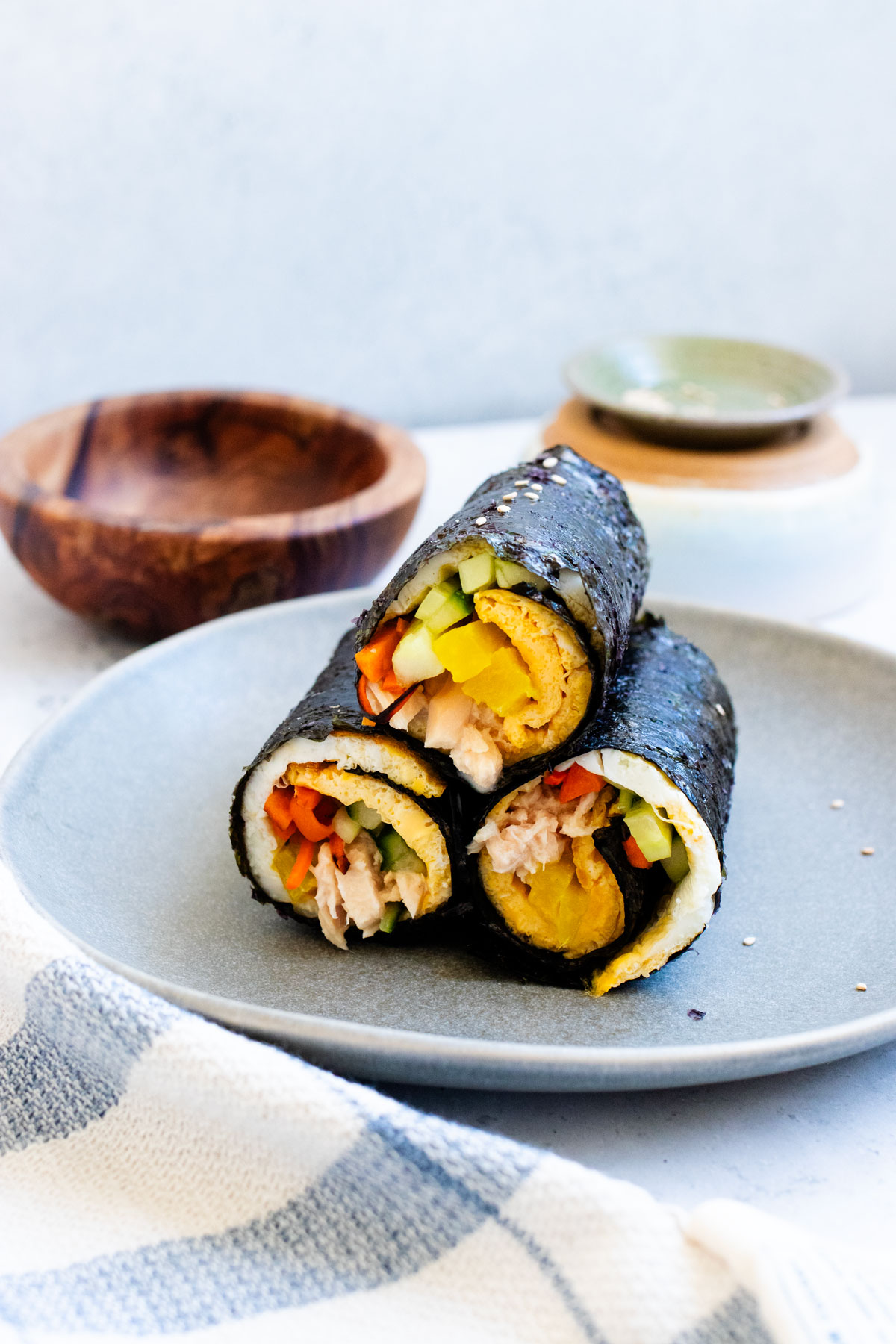
Kimbap, also known as gimbap, is a popular Korean dish and typically consists of rice, vegetables, egg, and meat or seafood rolled in seaweed and sliced into bite-sized pieces, making it a convenient and portable snack or meal. "Kim" stands for seaweed and "bap" stands for rice. However, to make this dish low carb and high protein, we'll replace the rice with eggs.
This dish is great when paired with other homey Korean dishes such as this Kimchi Mushroom Soft Tofu Stew (Vegetarian) or Kimchi Pancake.
Ingredients
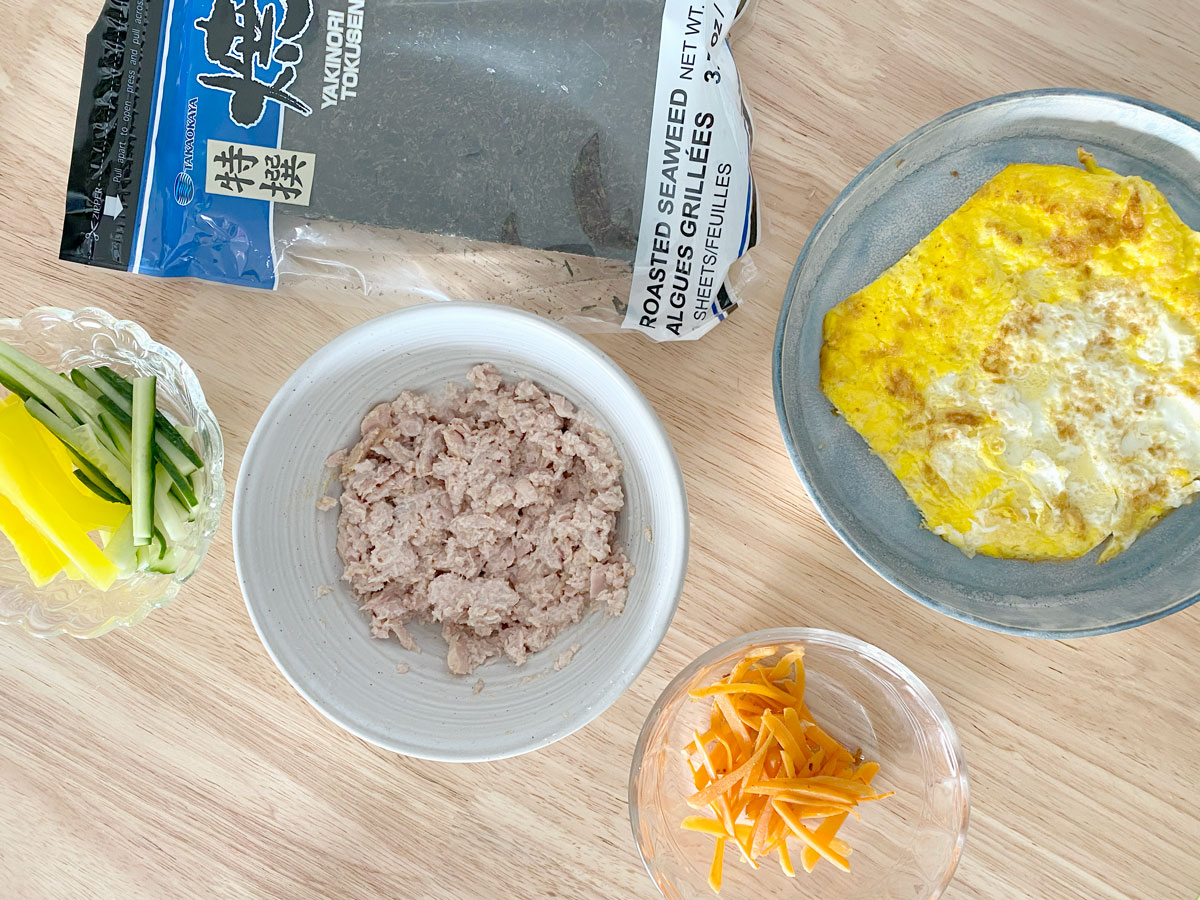
- Seaweed sheets: Seaweed sheets come in packets and are typically 8x8 inches. For this recipe, cut each seaweed sheet so its 4 inches wide.
- Eggs
- Carrots
- Cucumber
- Pickled daikon
- Canned tuna
- Greek yogurt: Use any type of unflavored greek yogurt. If you don't have greek yogurt on hand, sub with Japanese Kewpie mayo. Japanese Kewpie mayo has a creamier and smoother texture than regular mayo and is slightly sweeter and tangier.
- Rice wine: Rice wine adds an extra depth of flavor to the eggs. If you don't have rice wine, substitute with dry sherry or mirin, a Japanese rice wine. Alternatively, you can omit it altogether.
- Salt
- Onion powder
- White pepper powder
- Garlic powder
See recipe card for quantities.
Instructions
- Mix eggs in a bowl and season with salt and rice wine.
- Heat up a pan to medium heat and add oil (either a neutral oil or sesame oil). Using sesame oil will impart more taste to the eggs. If you want perfectly shaped eggs for the protein kimbap, I would recommend pan-frying the eggs in a square pan.
- Pour beaten eggs into the pan and let the edges firm up. Once firm, use a spatula to lift up the edges and allow the uncooked top to run to the bottom of the pan. Once bottom is cooked, flip the egg and cook the top for a couple seconds.
- Move egg to a separate plate. On the same pan, add more oil and lightly stir-fry the julienned carrots for 30 seconds.
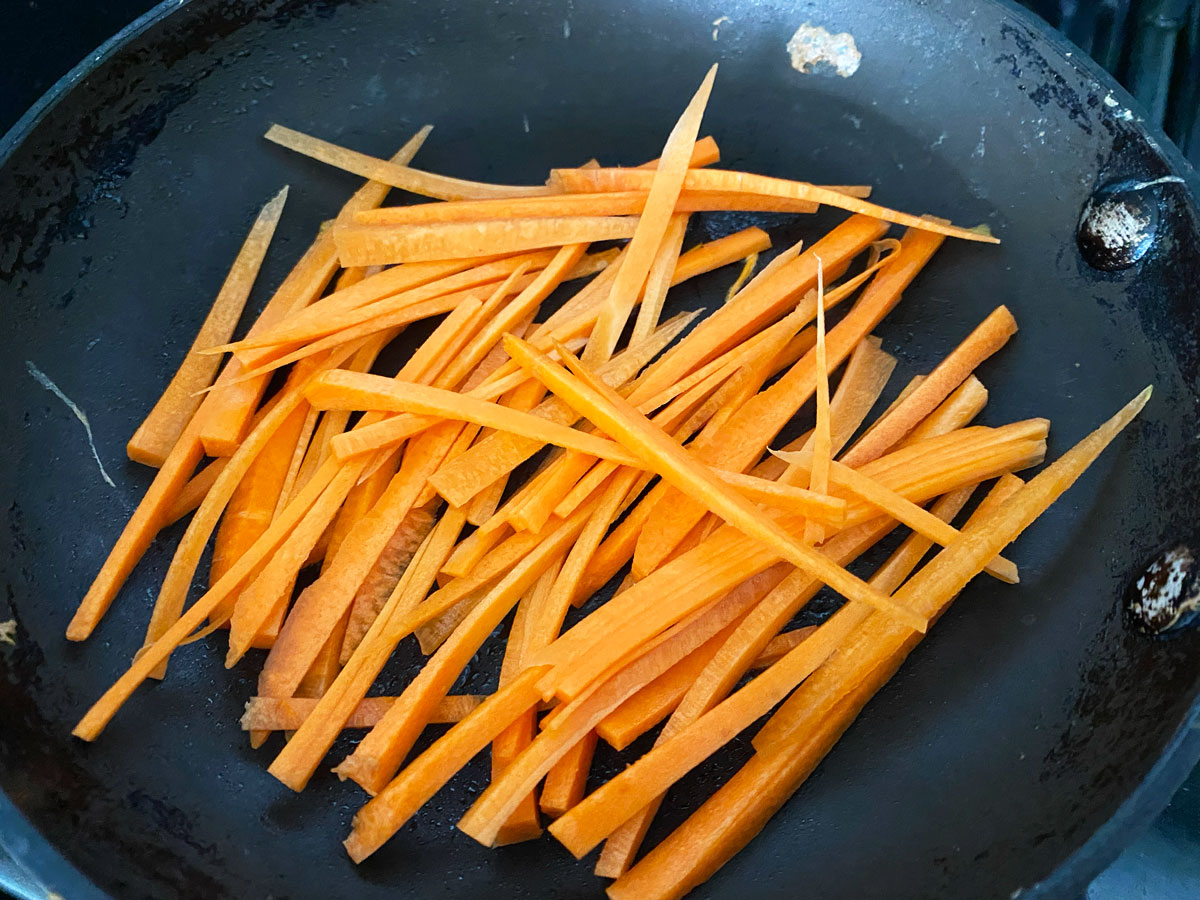
- Julienne cucumbers and remove the seeds from the center. The seeds carry extra liquid and we want to avoid any additional water. Salt and set aside. The salt will draw out the liquid. Remember to drain the cucumber before adding to kimbap.
- Slice daikon radish pieces into 2.5 inch lengths

- Drain tuna and place into a separate bowl. Add greek yogurt and season with garlic powder, white pepper powder, onion powder. If you prefer a creamier tuna, add more greek yogurt or even some Japanese Kewpie mayo.
- Cut seaweed sheet in half. Slice the fried egg so that it is the same width as half seaweed sheet. Cover the seaweed sheet and leave about 1.5 inches at the top.
- Add cucumbers, carrots, daikon radish, and canned tuna on top of the egg.
- From the end closest to you, roll seaweed tightly towards the top end. To keep seaweed sheet closed, rub a little water or sesame oil on the edge to seal shut.

- Brush some sesame oil on top of each roll and sprinkle with toasted white sesame seeds.
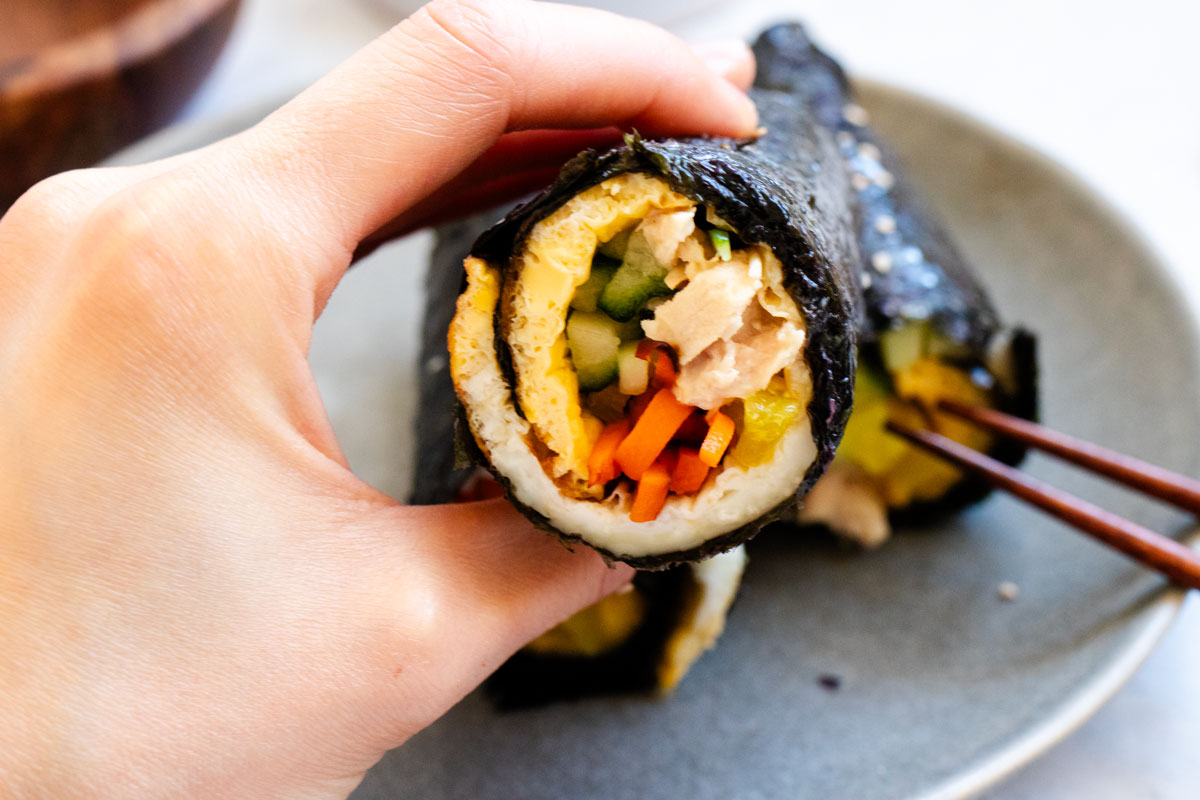
Variations
- Spicy: Add chopped up kimchi with the cucumbers, pickled daikon, and tuna. Drain the kimchi as much as you can to avoid excess liquids. Another way to spice it up is to add sriracha to the tuna before mixing.
- Deluxe: Add other traditional Korean kimbap ingredients such as murdock root, sauteed spinach, and fried fish cakes.
Equipment
8-inch square frying pan: If you'd like to make the eggs the perfect size, I'd recommend a square frying pan. The size of this pan will also make eggs the perfect dimension for this high protein kimbap recipe. It will also come in handy for this Korean Rolled Omelette recipe.
Sushi mat (optional): Kimbap can be easily rolled on a flat plate by hand. However, if you'd like, use a sushi mat to make the process easier and more efficient.
Storage
Enjoy immediately after making. Seaweed sheets become soggy quickly.
Top tip
Drain all kimbap ingredients well before assembly. Any excess liquid will quickly turn the seaweed sheets mushy, making them harder to assemble or pick up.
Always leave about 1.5 inches at the top of the seaweed sheet unfilled. This will allow the kimbap to roll closed and keep all the filling in. To keep the seaweed close, tab the two touches edges with either some water or sesame oil.
FAQ
Visit the search results to see which questions come up under the People also ask section for your primary keyword, and answer them here
Yes, you can use any similarly sized frying pan or even a non-stick skillet for cooking the eggs. Adjust the heat accordingly to prevent sticking.
Yes, you can julienne the vegetables, prepare the eggs, and mix the tuna filling ahead of time. Store each component separately in airtight containers in the refrigerator until you're ready to assemble the kimbap rolls.
To prevent the seaweed from becoming soggy, assemble the kimbap just before serving. If you need to make it ahead of time, wrap each roll tightly in plastic wrap and store in the refrigerator until ready to eat.
To ensure the kimbap rolls stay tightly sealed, apply a small amount of water or sesame oil along the edge of the seaweed before rolling it up. This will help create a tight seal and prevent the rolls from unraveling.
Related
Looking for other Korean recipes like this? Try these:
📖 Recipe
High Protein Low Carb Kimbap
Equipment
Ingredients
- 2 seaweed sheets (cut in half)
- 4 eggs
- ½ teaspoon salt
- 1 teaspoon rice wine
- 1 English cucumber (julienned)
- 2 strips pre-cut pickled radish
- 1 5 oz canned tuna
- 2 tablespoon Greek yogurt (sub Japanese Kewpie mayo)
- ½ teaspoon garlic powder
- ½ teaspoon onion powder
- ½ teaspoon white pepper powder
- 1 tablespoon sesame oil
- 1 tablespoon toasted white sesame seeds
Instructions
Eggs
- Whisk 2 eggs in a bowl and season with salt and rice wine.
- Heat pan on medium-high, then add a bit of sesame oil.
- Add beaten eggs and turn heat down to medium-low. Allow edges to firm up, then use a spatula to lift the edges and allow the runny parts to flow towards the bottom of the pan.
- Once the top of the egg is mostly firm, flip the egg and allow the top to cook for 20 seconds. Remove from pan to a separate plate. Slice each egg in half so that each piece is 4 inches wide.
- Repeat the above steps for the remaining 2 eggs.
Carrot Preparation
- Julienne carrots. Slice into 4 inch long sticks.
- Add to the pan with some sesame oil. Stir-fry for 30 seconds. Move to separate bowl.
Cucumber Preparation
- Julienne cucumbers. Slice into 4 inch long sticks. Remove the seeds to avoid excess liquid.
- Move julienned cucumbers to a separate bowl. Add salt and set aside. Before adding to the protein kimbap, drain to ensure there is no excess water.
Tuna Preparation
- Drain canned tuna and place in a separate bowl. Add greek yogurt and season with garlic powder, onion powder, and white pepper powder. Mix well. Add more greek yogurt if you'd like a creamier tuna mixture.
Pickled Daikon
- If purchasing pre-sliced pickled daikon, remove from package and slice into the same lengths as the cucumber and carrots.
- If purchasing full-sized pickled daikons, slice into half-inch wide strips. Then slice the strips into the same lengths as the cucumber and carrots.
Assembly
- Cut each 8x8 seaweed sheet in half so now each half sheet is 4 inches wide and 8 inches in length.
- Place one sliced egg piece on the half seaweed sheet. There should be about 1.5 inches of empty space left on the top of the seaweed sheet.
- Assemble tuna, julienned carrots, cucumber, and pickled daikon next to each other.
- From the side closest to you, roll the seaweed and the ingredients upwards tightly. When completely rolled, dab some water or sesame oil on the closing edges to seal shut.
- Brush some sesame oil on top and add sesame seeds.


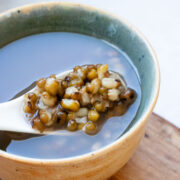



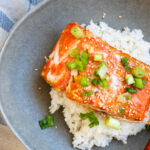



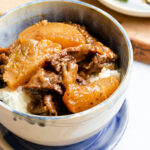
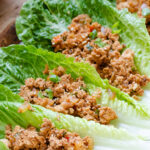




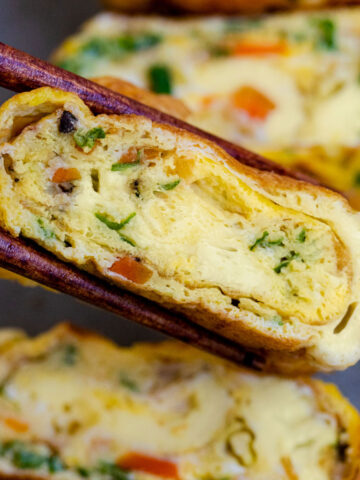

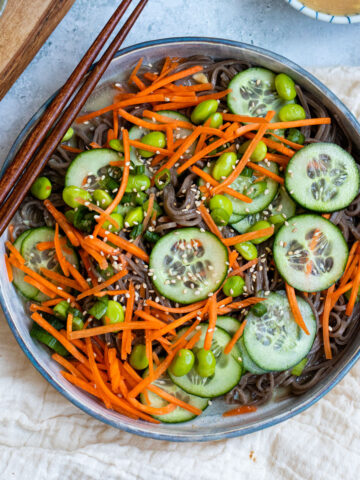
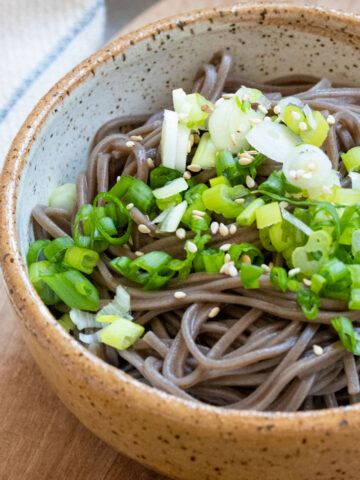
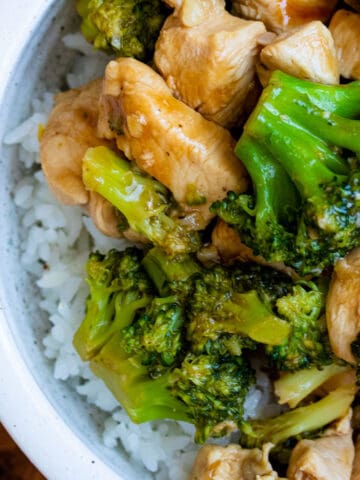
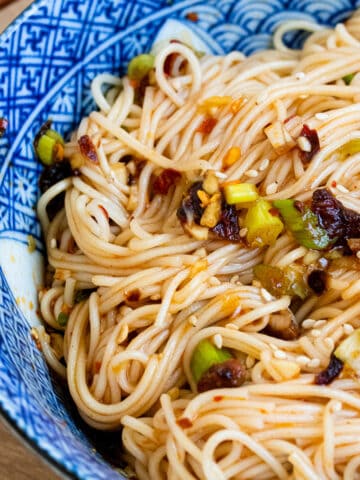
Comments
No Comments